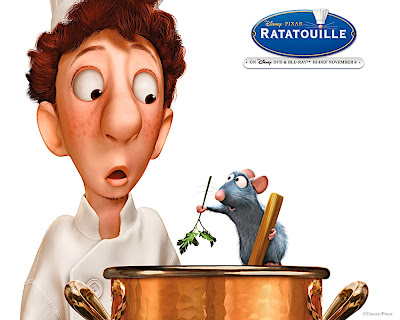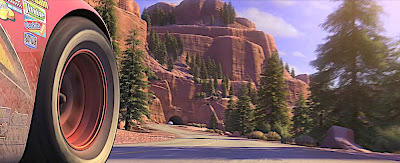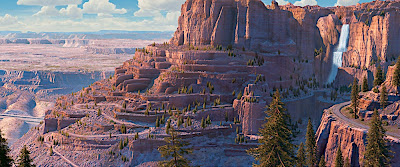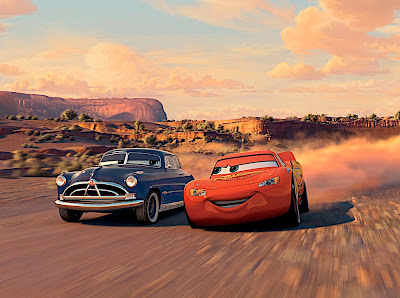When it came time to find music that matches the frenzied pace and subtlety RATATOUILLE's emotions (Ra.ta.tui), Brad Bird did not hesitate and called the composer who had done a great job in "The Incredibles (The Incredibles)." It was Michael Giacchino, who created a soundtrack with jazzy rhythms and metal percussion that is so fun, fast and with a French flavor like the movie. "Although this film does not look like 'The Incredibles (The Incredibles)," Michael records are so great, I knew it was the perfect composer for the film, "says Bird. "This movie is more dizzying than 'The Incredibles (The Incredibles)." Is a romantic and funny journey through Paris, and Michael has done a great job of capturing that feeling. " The spirit of collaboration between Giacchino Brad Bird and prompted them to find a very innovative sound for the film. "These two guys also know that they know what the other is thinking," says producer Brad Lewis. "Brad is expressed with a visual language and Michael is expressed in a musical language, but to fuse beautifully in the movie. A Sometimes music is subtle, sometimes more loud and more comical. Michael is the mood for each movement of history. It can be great and moving at the same time may seem very light and a little clumsy. Exactly what we needed in this film. " When Giacchino was a first assembly of RATATOUILLE (Ra.ta.tui), he knew he would face one of the biggest challenges of his life. "When I saw the movie, scared me a lot because I knew I had that music could not resemble anything I had done before. He had a style that had not worked before. Actually, I had a lot of styles to which more diverse. So I left the cinema and I went to see Brad Bird. I said I was frightened but determined to try, "recalls the composer.
With these words, Giacchino joined the project, but realized that would also have to reverse the process of creation. "Before seeing the film, had a very practical approach. But after seeing it, it became a very emotional, "she explains." It was the final scene of the film in which the food critic Ego writes his criticism that gave me the key to the film. I helped compose the theme of the film and also became one of the songs in the film. "
continues," is a film very happy, but also has a touch melancholy. The melancholy that emerges when you look back and think about all the things you wanted to do. Wanted the music to express this idea. My main goal was to try to capture that feeling. In addition, lots of action and fun, but I never wanted this will give umbrage to the true message of the film. "
also the main theme, Giacchino composed songs for each of the characters, so that reflected their individual personalities and desires. "I like working with a thematic approach because it is the best way to represent the characters," he says. "That's why I like movie soundtracks like 'Star Wars (The War of the Stars)', 'Raiders of the Lost Ark (Raiders of the Lost Ark)' or 'The Adventures of Robin Hood (The Adventures of Robin Hood ) of the thirties. They all have great themes with a focus almost operatic. They are the soundtracks that have impacted me most. "
Remy, he adds, has two themes, as well as a 'theme crony' he shares with Linguini. "At first, Remy has this insistent theme that follows you everywhere, like the genes that make him a rat even though he wants to be something else," says Giacchino. "Domina in the scenes running around the house and between floors.
But when it comes to the roof sees Paris for the first time, there is a new song about the dreams and hope. Remy is leading inside. The first issue is what one thinks when he sees Remy for the first time, but when you look at Paris, this is the real Remy. "
On the issue that arises between Linguini and Remy, Giacchino says:" The issue crony only hear when they are working together. The first occurrence is when Remy understand how you can control Linguini. Then progresses to become a heroic action score at the end of the tape, when rats Linguini go together and sliding with their skates. It looks like an issue of World War II because their friendship has reached a point where they know that the only solution is to try it together. "
Another key theme of the film is that of Colette, which Giacchino explains "that envelops the entire cooking process." He adds: "The first time you hear is when Linguini Colette is teaching what to do in the kitchen and need to learn to become a great chef. After changes as the film progresses, depending on the circumstances. When Linguini has to make a dish that is not on the menu and Remy begins to improvise, the theme recurs, but much more improvisational. The issues and the constantly changing music history. " Skinner also the subject of change according to their moods. Start with a French-style jazz theme that becomes increasingly frantic and orchestral as you lose control of the kitchen. "The track begins in a smooth, light and ends up becoming a craze, as happens to the character," says Giacchino laughing.
By weaving the many styles and colors of the film, made a separation Giacchino Music between the worlds of humans and rodents. "There is an instrument that I used much to the world of rodents, including a giant thumb piano joins the orchestra a lot of pizzicato strings, "he says." A Brad loved the sound of pizzicato strings for rats, but again there was no rule or slogan. What I fit into a scene with the rats could not fit into the next. Everything changes constantly. "
But contrast the visual craziness that offers a frenzied physical comedy RATATOUILLE ( Ra.ta.tui), Giacchino wanted the soundtrack was very subtle. "In animation it is easy to hunt down all the movements," he says. "But what I love about music films is that the smallest detail can suggest something special. So I decided to stay out and let the images speak for themselves, like an action movie. "
With a soundtrack so diverse, the next task was to form an orchestra Giacchino only with jazz influences, which include some unconventional instruments like the harmonica or accordion. The composer was delighted to be able to hire a good number of great musicians who add their styles in the recording sessions. For example, Tommy Morgan, one of the greatest harmonica players in the world that has recorded more than 7,000 sessions for albums, television, film and with a career spanning more than 50 years standing, the award-winning jazz accordionist Frank Marocco, considered the most recorded accordionist in the world, the legend under Abe Laboriel has all recorded with jazz greats ranging from Ella Fitzgerald Herbie Hancock, and the great jazz drummer Harvey Mason began his career with Duke Ellington and Erroll Garner in the sixties and has been nominated seven times GRAMMY ® Awards . "Bringing together some of the best musicians in the world in a room for one week was a wonderful opportunity," says Giacchino, referring to the recording of the soundtrack. And the icing on Giacchino cake is the song "Le Festin" which he wrote and then recorded with the lovely Camille, a young French singer who has created his own style of French song. "He has a unique sound and a very special voice. Nobody could have sung better than she does that movie, "says the composer." The song is based on an old French proverb that talks about bringing your friends and family around a table and a good meal. Is a song that reflects perfectly the story of RATATOUILLE (Ra.ta.tui).





































